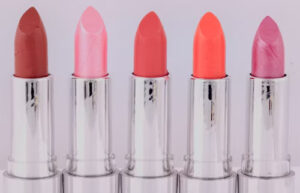For a long time, there’s been a strange rumor in the beauty world: that lip gloss contains whale sperm. But don’t worry, that’s not true! It probably comes from an old ingredient called spermaceti that was once used in cosmetics. Let’s learn more about lip gloss and find out what it’s really made of!
Spermaceti: An Old Wax
Spermaceti is a kind of wax that comes from the head of sperm whales. People really liked it because it was smooth and melted at a high temperature. They used it in cosmetics, candles, and lubricants for a long time. In the 1700s and 1800s, lots of whales were hunted because of how much people wanted this wax.
Why Use Whale Sperm? Understanding Spermaceti
Sperm whales have a special organ in their heads called the spermaceti organ. It’s filled with a special kind of oil that helps the whale control how it floats and hear sounds underwater. As time goes by, the oil turns into a waxy substance called spermaceti.

The Fall of Spermaceti
Because of concerns about hunting whales and finding other fake options, the use of spermaceti started to go down. By the middle of the 1900s, people hardly used it in cosmetics anymore. Nowadays, trading whale stuff internationally is not allowed, so spermaceti is mostly a thing of the past.
What’s in My Lip Gloss?
Today’s lip gloss is very different from the ones made with spermaceti. Nowadays, they’re made with safe, fake ingredients that do lots of good things:
- Waxes: Ingredients like beeswax, candelilla wax, and carnauba wax help give lip gloss its shape and shine.
- Oils: Natural oils such as coconut oil, jojoba oil, and castor seed oil make lips soft and smooth.
- Emollients: These things make lips feel nice and improve how they look. Things like shea butter and lanolin are often used.
- Flavorings: These give lip gloss a good taste and smell.
- Pigments: Minerals that give lip gloss lots of pretty colors.
The Future of Lip Gloss: New Ideas and Eco-friendliness
The lip gloss world keeps changing. Companies are trying out new things like using plants instead of wax and getting natural oils in a way that’s good for the environment. They’re also thinking more about making products that don’t hurt animals and are better for the planet.

Looking Past the Rumors: Picking Your Lip Gloss
Now that we know the spermaceti rumor isn’t true, you can pick a lip gloss that’s right for you. Think about:
- Finish: Do you like glossy, shiny lips, a little shine, or a flat look?
- Moisture: If your lips get dry, pick glosses with oils that moisturize.
- Color: Pick a color that goes well with your skin and makeup.
- Ingredients: If your skin is sensitive, go for glosses without fragrances or that are labeled hypoallergenic.
Modern Lip Gloss Ingredients
Today’s lip glosses contain various ingredients to give shine, hydration, and sometimes color. Here are the main components:
- Emollients: These soften and moisturize the lips. They include oils like mineral oil, castor oil, and lanolin.
- Waxes: Waxes help the gloss stick to the lips and give it structure. Common ones are beeswax, carnauba wax, and candelilla wax.
- Pigments: These add color to the gloss. They can be synthetic or from natural sources like minerals and plants.
- Gloss Agents: These create the shiny look of the gloss. Polybutene, a synthetic polymer, is often used.
- Fragrances and Flavors: These make the gloss smell and taste good, improving the user experience.
Here’s a detailed table of modern lip gloss ingredients, including their functions and common sources or forms:
| Ingredient | Function | Common Sources/Forms |
| Petrolatum | Provides a protective moisture barrier, hydrating and sealing lips. | Derived from petroleum, often refined for cosmetic use. |
| Beeswax | Thickens the gloss, helping it adhere to lips while providing a natural shine. | Natural wax produced by honeybees. |
| Castor Oil | Moisturizes lips, contributes to a glossy finish, and smooth application. | Extracted from castor beans, often used in its natural oil form. |
| Shea Butter | Softens and nourishes lips, providing long-lasting moisture. | Extracted from the nuts of the shea tree, used as a butter or oil. |
| Candelilla Wax | Provides structure and adds a glossy finish to the product. | Derived from the leaves of the candelilla plant. |
| Carnauba Wax | Adds firmness to the lip gloss and enhances its shine. | Extracted from the leaves of the carnauba palm tree. |
| Vitamin E (Tocopherol) | Acts as an antioxidant, protecting lips from environmental damage. | Naturally found in oils, such as sunflower or wheat germ. |
| Mica | Adds shimmer, sparkle, or a pearlescent finish to the gloss. | A mineral often ground into fine powder for cosmetics. |
| Synthetic Fluorphlogopite | Provides a pearlescent and shimmering effect, with a smooth application. | A synthetic version of mica, used for consistency in color and texture. |
| Hydrogenated Polyisobutene | Enhances the glossiness, providing a smooth, non-tacky feel. | A synthetic oil used for its lubricating properties. |
| Dimethicone | Improves the spreadability and provides a silky, non-fatty feel. | A type of silicone used in various cosmetic products. |
| Isopropyl Myristate | Helps in achieving a non-fatty, lightweight feel. | A synthetic ester often used as an emollient. |
| Flavoring/Fragrance | Adds a pleasant taste or scent to the gloss, enhancing user experience. | Natural or synthetic flavor compounds. |
| Preservatives (e.g., Phenoxyethanol, Parabens) | Prevents microbial growth, ensuring the product’s safety and longevity. | Synthetic compounds used to preserve cosmetic formulations. |
| Colorants (e.g., Red 7 Lake, Blue 1 Lake) | Provides vibrant colors, allowing for a wide range of shades. | Synthetic dyes or pigments approved for cosmetic use. |
| Butylated Hydroxytoluene (BHT) | Acts as an antioxidant, preventing the oxidation of oils and fats. | A synthetic antioxidant used to extend shelf life. |
This detailed table covers the ingredients, their functions, and typical sources or forms in modern lip gloss formulations.
Synthetic and Plant-Based Alternatives
Cosmetic science has advanced to create synthetic and plant-based alternatives that mimic properties found in whale-derived substances. Here are some examples:
- Synthetic waxes: These can replicate the texture and stability of substances like spermaceti without using animal products.
- Plant oils and butters: Ingredients such as shea butter, cocoa butter, and jojoba oil are chosen for their moisturizing abilities, offering alternatives to animal-derived options.
- Synthetic polymers: These can provide the glossy shine desired in lip glosses, removing the necessity for any gloss agents derived from animals.
Below is a detailed table outlining the common components of lip gloss, including synthetic and plant-based alternatives:
| Category | Ingredient | Source | Function | Notes |
| Base/Emollient | Petrolatum | Synthetic (petroleum) | Provides smooth texture and moisture | Commonly used as a base in lip gloss formulations |
| Beeswax | Animal (Bees) | Thickens and provides structure | An alternative for natural, waxy texture | |
| Castor Oil | Plant (Castor Beans) | Adds shine and moisture | A popular plant-based emollient | |
| Shea Butter | Plant (Shea Tree) | Moisturizes and soothes | Plant-based, rich in vitamins | |
| Coconut Oil | Plant (Coconut) | Moisturizes and adds shine | Plant-based, natural sheen | |
| Thickening Agents | Polybutene | Synthetic (petroleum) | Adds viscosity and glossy finish | Common in many lip gloss formulas |
| Candelilla Wax | Plant (Candelilla Plant) | Provides structure and firmness | Plant-based alternative to beeswax | |
| Colorants | Titanium Dioxide | Synthetic | Provides white or opaque color | Often used in combination with other pigments |
| Iron Oxides | Synthetic or Mineral | Adds various shades (red, yellow, brown) | Used for natural and subtle color | |
| Carmine | Animal (Cochineal Insects) | Adds red/pink color | Natural dye, often replaced by synthetic options | |
| Mica | Mineral | Adds shimmer and pearlescent effect | Used for a shimmering effect | |
| Preservatives | Parabens | Synthetic | Prevents microbial growth | Controversial, often replaced by alternative preservatives |
| Tocopherol (Vitamin E) | Plant (Vegetable Oils) | Acts as a natural preservative and antioxidant | Also adds moisturizing benefits | |
| Fragrances/Flavors | Synthetic Fragrances | Synthetic | Adds scent or flavor | Wide range of synthetic options available |
| Essential Oils | Plant (Various) | Adds natural scent or flavor | Plant-based, may have added benefits like soothing or cooling | |
| Shine Enhancers | Lanolin | Animal (Sheep’s Wool) | Adds gloss and moisture | Sometimes replaced by synthetic or plant-based oils |
| Squalane | Plant (Olives, Sugarcane) | Adds moisture and shine | Plant-based alternative to squalene from shark liver |
Conclusion
Lip gloss is a cool makeup item that gives your lips shine and color. When you know what’s really in your lip gloss, you can pick the right one and feel good about it! So, next time you use your favorite gloss, remember, it’s not made from whale sperm – it’s science that makes your lips look great!
Vist here: Beauty

